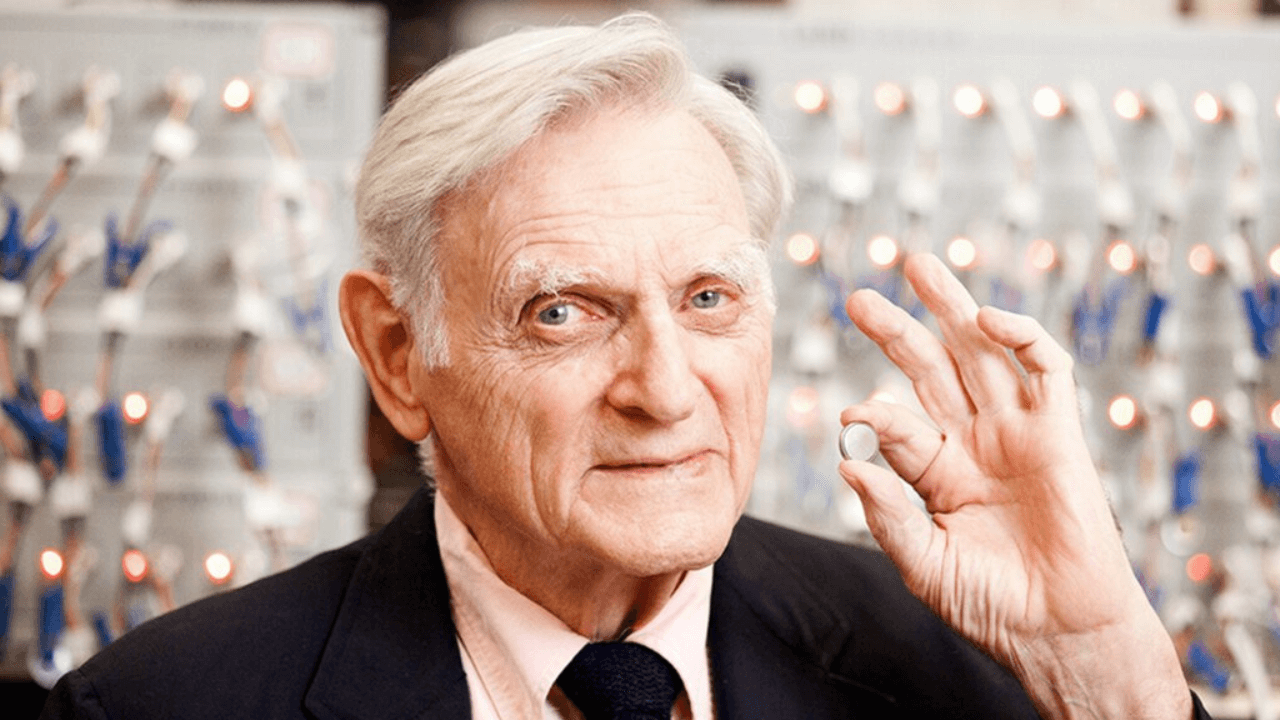The world mourns the loss of esteemed American scientist John Bannister Goodenough, who co-invented Lithium-ion batteries and was a recipient of the 2019 Nobel Prize in Chemistry. Goodenough passed away just a month before his 101st birthday, leaving behind a remarkable legacy. His British-American counterpart, Stan Whittingham, shared the Nobel Prize with Goodenough in recognition of their groundbreaking contributions to the field.
Whittingham’s initial discovery revealed that lithium could be effectively stored in titanium sulphide sheets. Building upon this finding, Goodenough made significant advancements by incorporating a cobalt-based cathode into the battery design. This breakthrough ultimately resulted in the development of Lithium-ion batteries, which have become an essential part of modern life, powering numerous devices and technologies.
Goodenough’s pioneering work in battery technology has had a profound impact, revolutionizing energy storage and contributing to the advancement of various industries. His exceptional contributions will be remembered as an enduring legacy in the scientific community and beyond.
About John Bannister Goodenough
John Bannister Goodenough was an American materials scientist, solid-state physicist, and Nobel laureate in chemistry.
- He was a professor of Mechanical, Materials Science, and Electrical Engineering at the University of Texas at Austin.
- He is widely credited with –
- the identification and development of the lithium-ion battery,
- for developing the Goodenough–Kanamori rules in determining the sign of the magnetic superexchange in materials,
- for seminal developments in computer random-access memory.
- In 1975, Goodenough proposed the use of lithium cobalt oxide as the cathode material in a rechargeable battery.
- This was a major breakthrough, as it led to the development of the lithium-ion battery, which is now used in a wide variety of devices, including laptops, smartphones, and electric vehicles.
- In 2019, Goodenough was awarded the Nobel Prize in Chemistry, along with M. Stanley Whittingham and Akira Yoshino, for their work on the development of lithium-ion batteries.
- Goodenough was 97 years old at the time, making him the oldest person to win the Nobel Prize in Chemistry.
Goodenough was a true pioneer in the field of materials science. His work has had a profound impact on the world, and he will be remembered as one of the most important scientists of our time.
About Lithium-Ion Battery
A lithium-ion battery (Li-ion battery) is a type of rechargeable battery in which lithium ions move from the negative electrode (the anode) to the positive electrode (the cathode) during discharge and back when charging. Li-ion batteries are used in a wide variety of devices, including laptops, smartphones, and electric vehicles.
Advantages
- High energy density: Li-ion batteries have a higher energy density than other types of rechargeable batteries, such as nickel-metal hydride (NiMH) and nickel-cadmium (NiCd) batteries. This means that they can store more energy in a given volume or weight.
- Long cycle life: Li-ion batteries can be cycled many times without losing their capacity. This means that they can be used for a long time before they need to be replaced.
- Low self-discharge rate: Li-ion batteries have a low self-discharge rate, which means that they do not lose their charge as quickly as other types of batteries when they are not in use.
Disadvantages
- High cost: Li-ion batteries are more expensive than other types of rechargeable batteries.
- Sensitivity to heat: Li-ion batteries can be damaged by heat, so they should be kept cool.
- Fire risk: If a Li-ion battery is damaged, it can catch fire. This is a rare occurrence, but it is important to be aware of the risk.
Most Common Uses
- Laptops and other portable electronics
- Smartphones and tablets
- Electric vehicles
- Power tools
- Medical devices
- Cameras
- Flashlights
- Toys
Recently, Lithium reserves were found in J&k and Rajasthan.
- 3 August Current Affairs 2023 in English
- MoU Between Subroto Mukerjee Sports and Education Society and All India Football Federation (AIFF) to Promote Football at Grassroot Level
- Dr. Mansukh Mandaviya Delivers Keynote Address at the 13th Indian Organ Donation Day ceremony
- Education Ministry Forms Expert Panel on Anti-Discrimination in Higher Education
- Concerns Arise Over Cheetah Deaths at Kuno National Park
